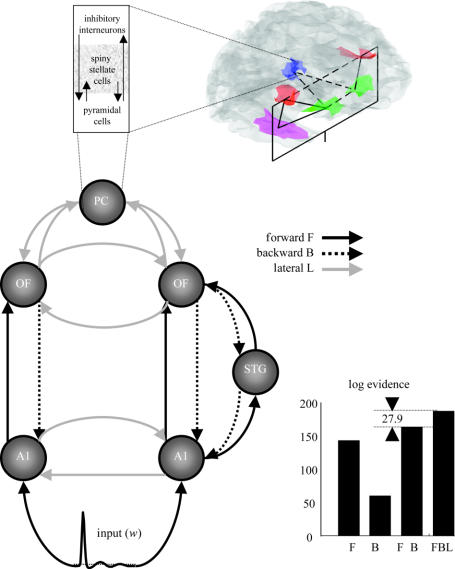Figure 7.
Upper right: transparent views of the cortical surface showing localized sources that entered the DCM. A bilateral extrinsic input acts on primary auditory cortices (red), which project reciprocally to orbito-frontal regions (green). In the right hemisphere, an indirect pathway was specified via a relay in the superior temporal gyrus (magenta). At the highest level, orbito-frontal and left posterior cingulate (blue) cortices were assumed to be laterally and reciprocally connected (broken lines). Lower left: schematic showing the extrinsic connectivity architecture of the DCM used to explain empirical data. Sources were coupled with extrinsic cortico-cortical connections following the rules of Felleman & Van Essen (1991). A1, primary auditory cortex; OF, orbitofrontal cortex; PC, posterior cingulate cortex; STG, superior temporal gyrus (right is on the right and left on the left). The free parameters of this model included extrinsic connection strengths that were adjusted to best explain the observed ERPs. Critically, these parameters allowed for differences in connections between the standard and oddball trials. Lower right: The results of a Bayesian model selection are shown in terms of the log evidence for models allowing changes in forward (F), backward (B), forward and backward (FB) and forward, backward and lateral connections (FBL). There is very strong evidence that both backward and lateral connections change with perceptual learning as predicted theoretically.

